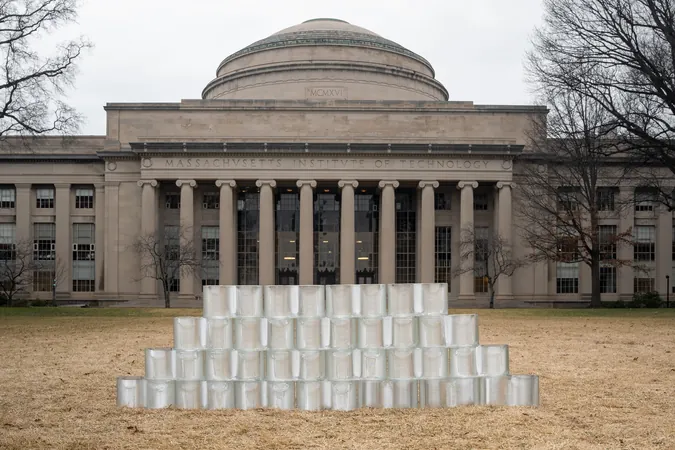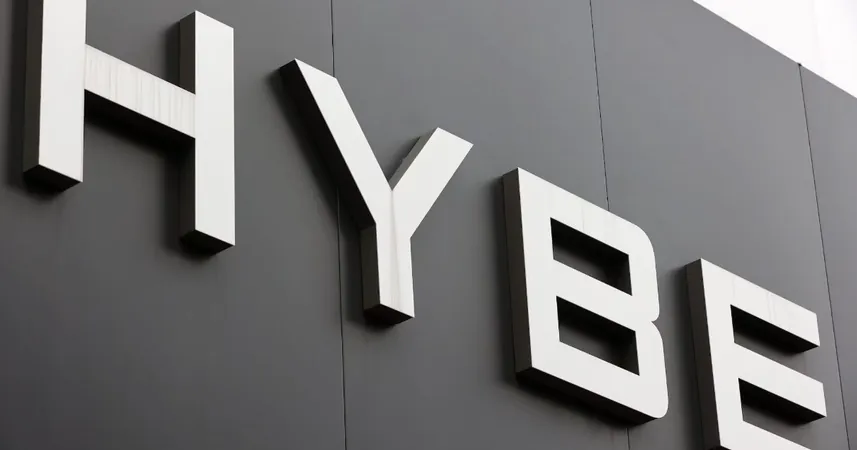
MIT Engineers Innovate with 3D Printed Glass Bricks for Sustainable Building Design
2024-09-20
Author: Nur
Imagine a future where building materials can be assembled and disassembled with the ease of LEGO bricks, paving the way for sustainable construction practices. This revolutionary concept is at the heart of circular construction, which emphasizes reusing and repurposing materials to minimize the need for new resources and cut down on the greenhouse gas emissions associated with construction.
Taking a giant leap toward this visionary future, engineers at the Massachusetts Institute of Technology (MIT) have developed an innovative form of reconfigurable masonry using 3D-printed recycled glass. Collaborating with the spinoff company Evenline, the team has crafted durable, interlocking glass bricks shaped like figure eights. These bricks promise to not only match the strength of traditional concrete blocks but also cater to a sustainable model where materials can be kept in the production cycle indefinitely.
Kaitlyn Becker, an assistant professor of mechanical engineering at MIT, highlighted the benefits of glass as a construction material, stating, "We’re transforming glass into masonry that can easily be disassembled and reused in future structures, or melted back down to be reshaped entirely. This innovation aligns perfectly with sustainable building practices."
The potential of glass as a structural element might seem unconventional, but researchers Becker and Michael Stern, a former MIT student and founder of Evenline, are determined to break new ground in architecture. In their recent publication in the journal Glass Structures and Engineering, they detail their groundbreaking designs and the capabilities of their new glass-brick technology.
The inspiration behind these bricks arose from experiences in MIT’s Glass Lab, where teaching students the art of glassblowing sparked thoughts about new applications for this versatile material. Stern, who created a specialized 3D printer to handle molten recycled glass, began to explore how glass could be integrated into construction. His vision blossomed into a project that challenges conventional architectural limits.
Using the advanced G3DP3 printer from Evenline, the team fabricated bricks from soda-lime glass, commonly found in glassblowing studios. Each brick features cylindrical pegs that lock together seamlessly, enabling the formation of larger structures that mimic traditional building methods. They even incorporated a removable material between the bricks to prevent damage during construction yet allow for easy dismantling and recycling later on.
Mechanical tests on the glass bricks have yielded promising results, demonstrating that they can withstand forces comparable to those affecting concrete blocks. The researchers built an entire curved wall using interlocking glass bricks, laying the groundwork for progressively larger and self-supporting glass structures in the future.
"We want to start with smaller designs, like pavilions, where people can engage with the structures before reconfiguring them for new uses," Stern said. “Picture a building material that lives through multiple incarnations, maximizing its utility while reducing waste.
As conversations surrounding sustainability in construction grow louder, the emergence of 3D-printed glass masonry stands as a testament to engineering ingenuity. These innovations not only pave the way for eco-friendly building practices but also encourage architects and builders to rethink traditional methods. The future of architecture could very well be glass, adaptable and enduring for generations to come.




 Brasil (PT)
Brasil (PT)
 Canada (EN)
Canada (EN)
 Chile (ES)
Chile (ES)
 España (ES)
España (ES)
 France (FR)
France (FR)
 Hong Kong (EN)
Hong Kong (EN)
 Italia (IT)
Italia (IT)
 日本 (JA)
日本 (JA)
 Magyarország (HU)
Magyarország (HU)
 Norge (NO)
Norge (NO)
 Polska (PL)
Polska (PL)
 Schweiz (DE)
Schweiz (DE)
 Singapore (EN)
Singapore (EN)
 Sverige (SV)
Sverige (SV)
 Suomi (FI)
Suomi (FI)
 Türkiye (TR)
Türkiye (TR)